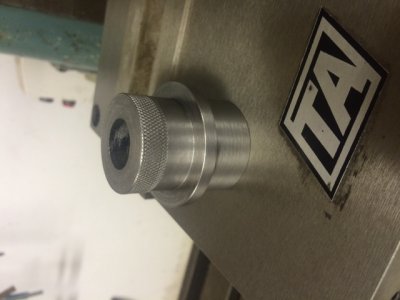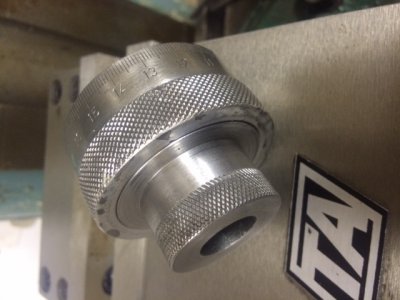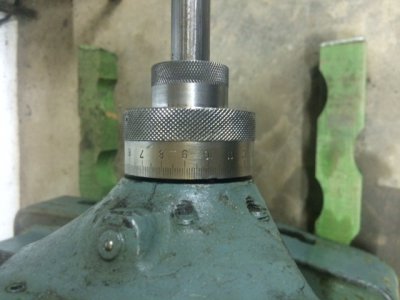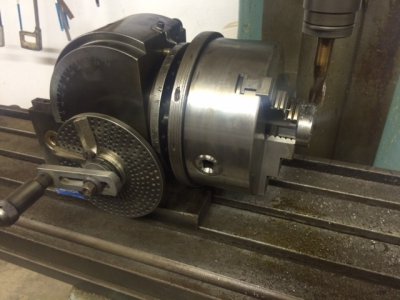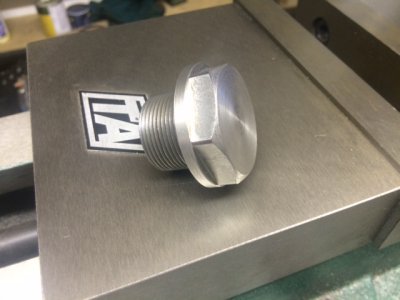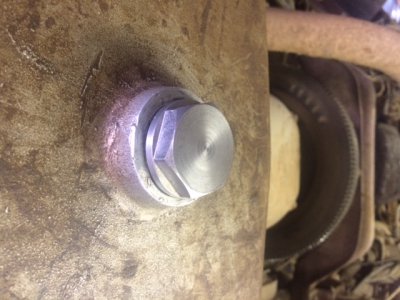Working on a project last week I found that I couldn't trust my reading of the DRO on the quill of my PM25, the light falling on it was such that I couldn't read it accurately. I make a pocket .050 too deep. I needed a positive stop on the quill. I got to thinking about it, the top of the quill descends into a sleeve, which is vertically stationary, both turn with the tool
Here's what I came up with, a sleeve that will attach to the quill but travel into the sleeve, with an adjustable stop mounted on my sleeve.
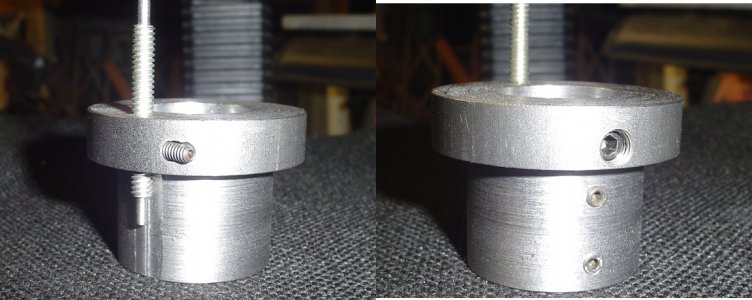
The stop, on the left, is secured with the set screw, there's an aluminum plug under th set screw. The three set screws are all flattened on the end and they seat on a flat machined on the draw bar retainer. This unit can be installed upside down, too. I don't know what the maximum stroke will be for the stop, the quill only moves 1 3/4 inches, anyway.
Below is the top of the mill without and with the stop installed. It's meant to be left off except when needed.
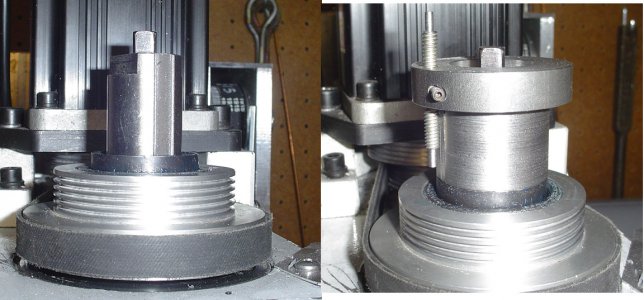
In use, the blued portion of the quill descends into the spindle, the stop will encounter the top of the sleeve that the pulley is mounted on.
My plan is to bring the tool down to touch the work, then put a stack of jo blocks under the stop and run the screw down to it and lock it there, the tool will then go down exactly what is needed. This is planned, it may not be that easy. All this assembly will be spinning all the time.
